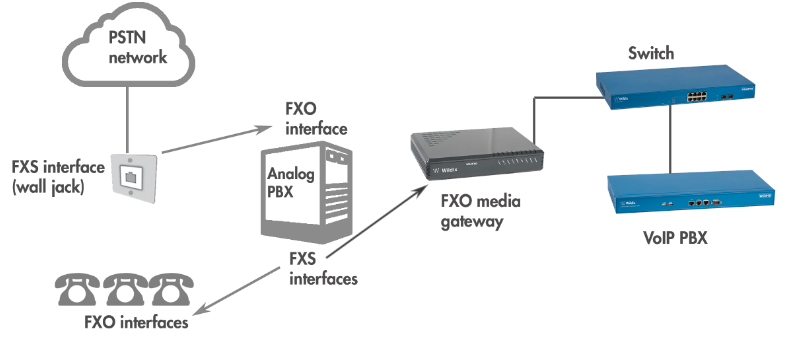The difference between FXO and FXS

FXO and FXS are the ports used by analog phone lines and analog phones and faxes.
These two interfaces are always paired (FXO is always connected to FXS and vice versa).
In telecommunications, FXS and FXO are used to indicate whether VoIP equipment is designed to support analog phones (stations, FXS) and analog lines (office, FXO).
FXS is the port used by analog lines, example: telephone jack on the wall / FXS ports of an analog telephone exchange used to connect analog devices.
To connect analog devices to VoIP PBX, use FXS media gateway (media gateway with FXS port).
FXO is the port used by analog devices, example: FXO port of an analog phone, modem, fax (these devices are often called FXO devices), FXO port of an analog telephone exchange used to connect lines.
FXO media gateway (media gateway with FXO port) is necessary to connect analog line to VoIP PBX.
More about FXO and FXS
FXO abbreviation stands for “Foreign eXchange Office” (analog line) end of the line, while FXS – “Foreign eXchange Station” (analog phone) end.
FXS interface provides telephony services and supplies battery power, provides dial tone and generates ringing voltage.
FXO interface receives telephony services and generates off-hook and on-hook indications at the FXS end of the telephone circuit.
FXO interfaces are usually found in devices which act as gateways between local VoIP systems and PSTN (Public Switched Telephone Network).
FXO interfaces allow the networking equipment to interact directly with POTS (Plain Old Telephone Service, or analog telephony) systems.
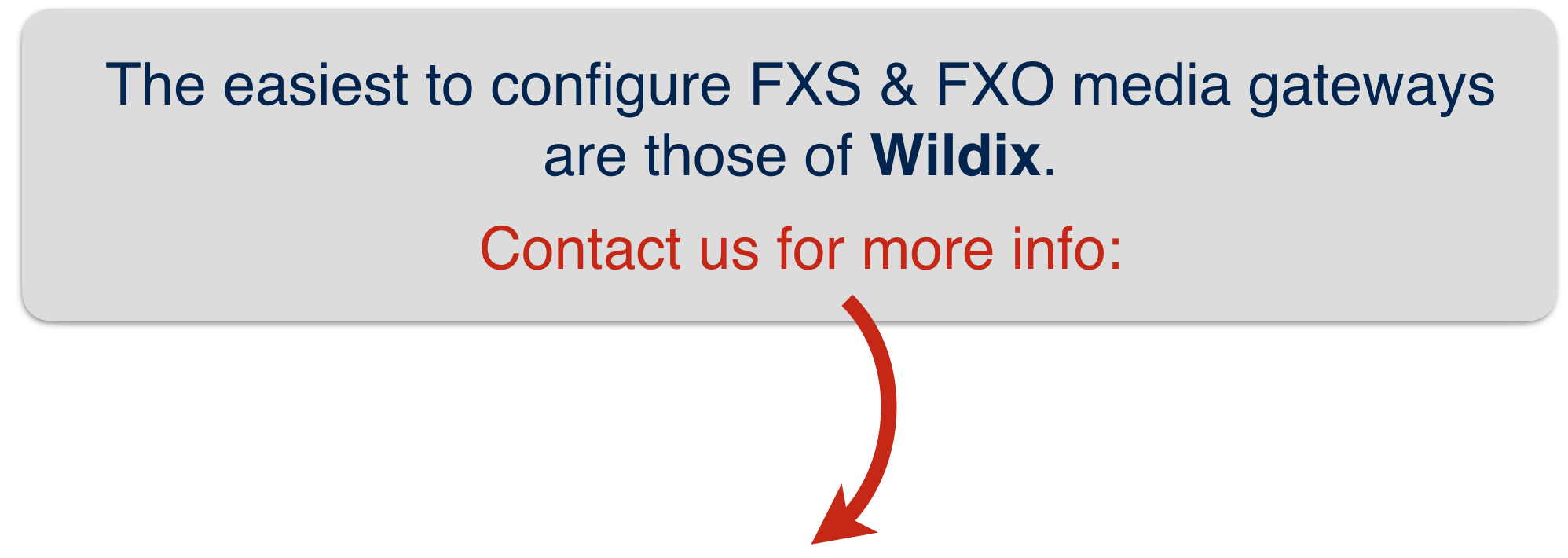
FXO in analog telephony vs FXO in VoIP systems
In analog telephony, FXO interface of the analog device is connected to the FXS interface of the analog line provided by the telephone company (the wall jack).
Scheme 1: Analog home telephony
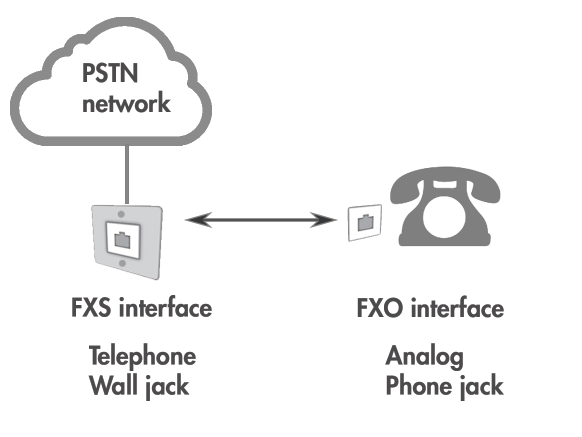
In VoIP telephony, to connect analog lines to an IP phone system, you need an FXO gateway:
FXS interface (analog telephony line) is connected to the FXO gateway, which, in its turn, is connected to the IP PBX.
Scheme 2: Connection of analog lines to VoIP PBX with the help of FXO media gateway
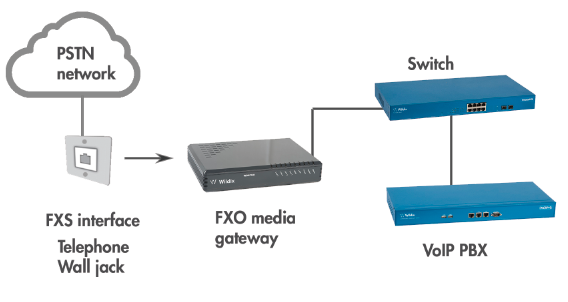
Otherwise you can connect an analog telephone exchange to a VoIP PBX and in this way, empower some analog users with Unified Communications capabilities.
In this case you must connect FXS ports of an analog telephone exchange to the FXO media gateway, and FXO media gateway, in its turn – to the VoIP PBX.
Scheme 3: Connection of analog PBX to VoIP PBX with the help of FXO media gateway
FXS in analog telephony vs FXS in VoIP systems
In legacy telephony FXS interface is the analog line provided by the telephone company (wall jack), to which an FXO port of an analog phone is connected.
In VoIP systems you need an FXS gateway: FXO ports of analog phones are connected to the FXS ports of the gateway, the gateway in its turn, is connected to the VoIP PBX.
Scheme 4: Connection of analog phones / fax to VoIP PBX with the help of FXS media gateway
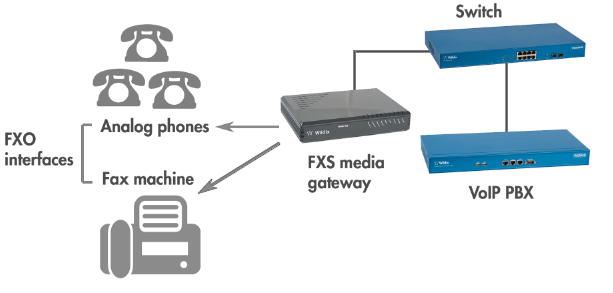
Wildix FXS / FXO media gateways
Wildix offers one FXO media gateway and three models of FXS media gateways.
W04FXO media gateway with four FXO interfaces (PoE) which can manage incoming and outgoing calls and Flash Hook feature, and allows you to connect up to four analog lines.
W01FXS has one RJ11 (PoE) ports to connect one analog device (fax / phone)
W04FXS has four RJ11 (PoE) ports to connect up to four analog devices
W24FXS has 24 RJ11 ports + 1 RJ21 connector with BLF indications for each port, in this way allowing you to either directly connect analog devices to FXS ports, or connect them using a patch panel.
